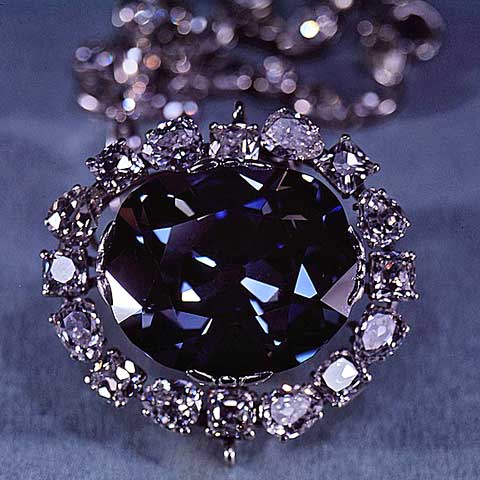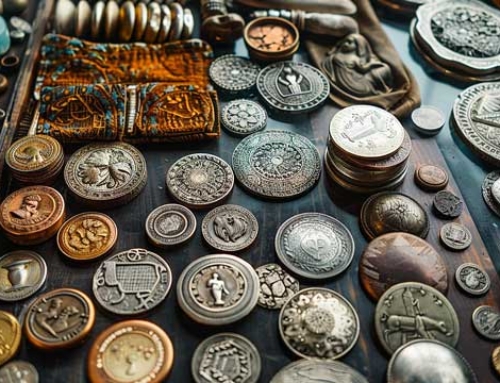Possession of the Hope Diamond is certain death… at least that’s what the legend says. Anyone who gets their hands on the Hope Diamond would be cursed… The list of its (very unlucky) owners tells the story from the 16th century to the present day…
According to the legend, it would have been stolen in India on a statue of the goddess Sitâ by a Hindu priest (who would have been tortured before being killed for his gesture), before arriving in the hands of Louis XIV. But let’s go back.
The Blue Diamond of France
The 112.5 carat precious stone falls into the hands of Jean-Baptiste Tavernier. This great traveller, described by some as a smuggler, made his fortune by selling the stone to Louis XIV. The King of France had the diamond cut to 67.5 carats and named it Bleu de France.
It is said that Tavernier was ruined by his son and ended up being eaten by wild dogs in India where he was looking for fortune. In reality, he died in Russia at the very venerable age, for the time, of 84.
Louis XV inherited it and the diamond quietly stayed in its place without making waves. But Louis XVI and his wife Marie-Antoinette were not so lucky. From there to accusing the diamond of being responsible for the French Revolution and the King’s rise to power, it is only a short step…
The revolutionaries confiscate the monarch’s assets, including the famous diamond, which was then placed in the national furniture repository. In 1792, the jewels of the French crown were stolen, including the Blue Diamond of France…
From French Blue to Hope Diamond
The thieves escape to England where the stone is cut and disappears. It is found exactly 20 years and 2 days after its disappearance, whereas there is a statute of limitations for theft.
In 1824, the London banker Thomas Hope buys it. Seven years later, he dies. His wife, Louisa de la Poer Beresford carries it without any concern for the sulphurous reputation of the cursed diamond. The diamond passes from inheritance to inheritance in the family…
Henry Francis Hope Pelham-Clinton inherited it in 1887 as a life insurance policy. He cannot dispose of it without the authorization of a Board of Trustees AND the authorization of the court. Nothing less and that’s what’s going to be his downfall…
The curse continues
Living beyond his means, Pelham-Clinton practically ruined the family in ten years. By the time he got the right to sell the Hope Diamond, his wife had left him for another man. Finally sold, the Hope Diamond and its curse crossed the ocean and established their effects in the United States. That’s when his reputation began to spread. We then speak of a cursed diamond bringing debts and/or tragic death to all its owners. It passes from hand to hand, including the Cartier Jewelry House.
The American Evalyn Walsh McLean falls madly in love with stone. She buys it with a very specific clause in the contract: “If, within six months of the transaction, something happens to the McLean family, Cartier agrees to replace the jewel. “It is even said that her husband forced her to have the stone blessed in a church!
From then on, Evalyn wore the Hope diamond constantly. But in 1919, Evalyn’s nine-year-old son was hit by a car. The diamond was found in his pocket, undamaged. Her husband becomes an alcoholic and runs off with a young woman.
A few years later, their daughter, 25, dies of an overdose. Evalyn loses her mind and is institutionalized until her death.
Donation of the diamond
The Hope diamond is then sold to the famous jeweller Harry Winston. Did he fear for his fortune and his life? History does not say, but he donated the evil stone to the Smithsonnian Institute in Washington in 1958. It is said that in order to make the transport of this valuable stone worthwhile, Winston simply sent it… by mail!
Since then, the diamond has been living happily ever after at the Smithsonian. It is the largest blue diamond ever discovered and is the most seen piece of art in the world after Leonardo da Vinci’s Mona Lisa.
Since it has been in the Museum, the Hope Diamond has never been sweeter! No colossal debt, no tragic death is to be blamed on it. In any case… not one of the 6 million annual visitors has complained about it!







